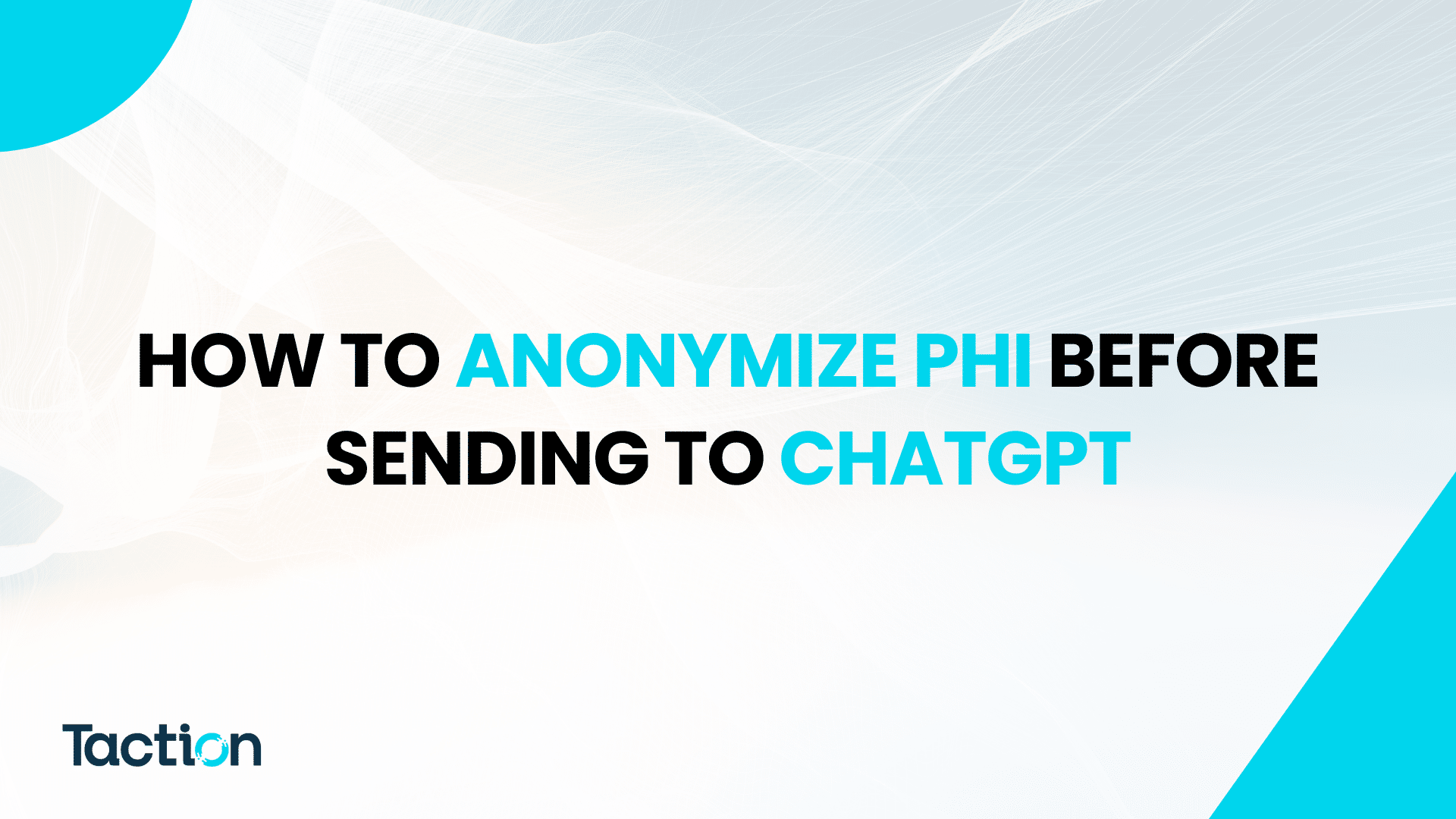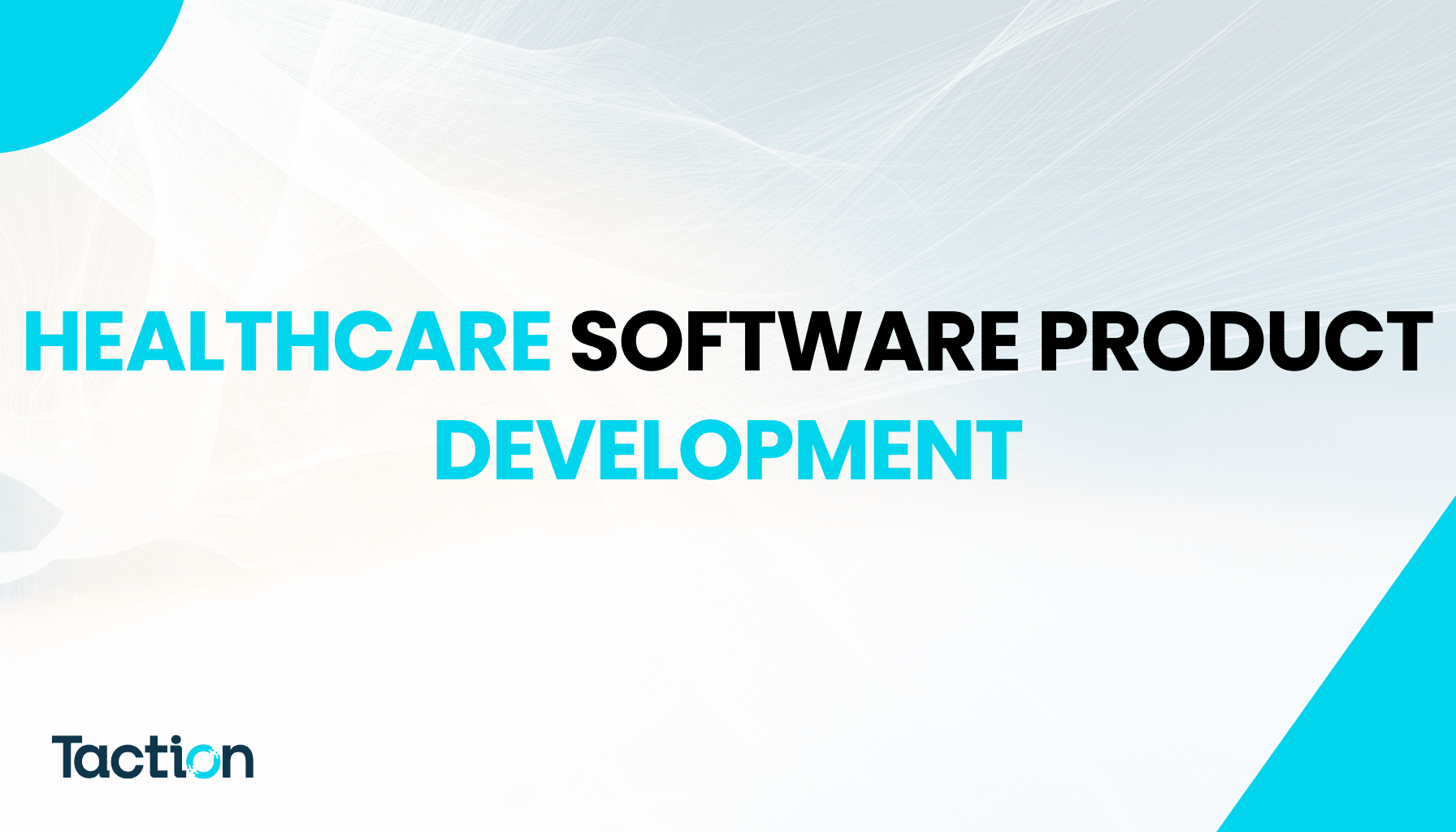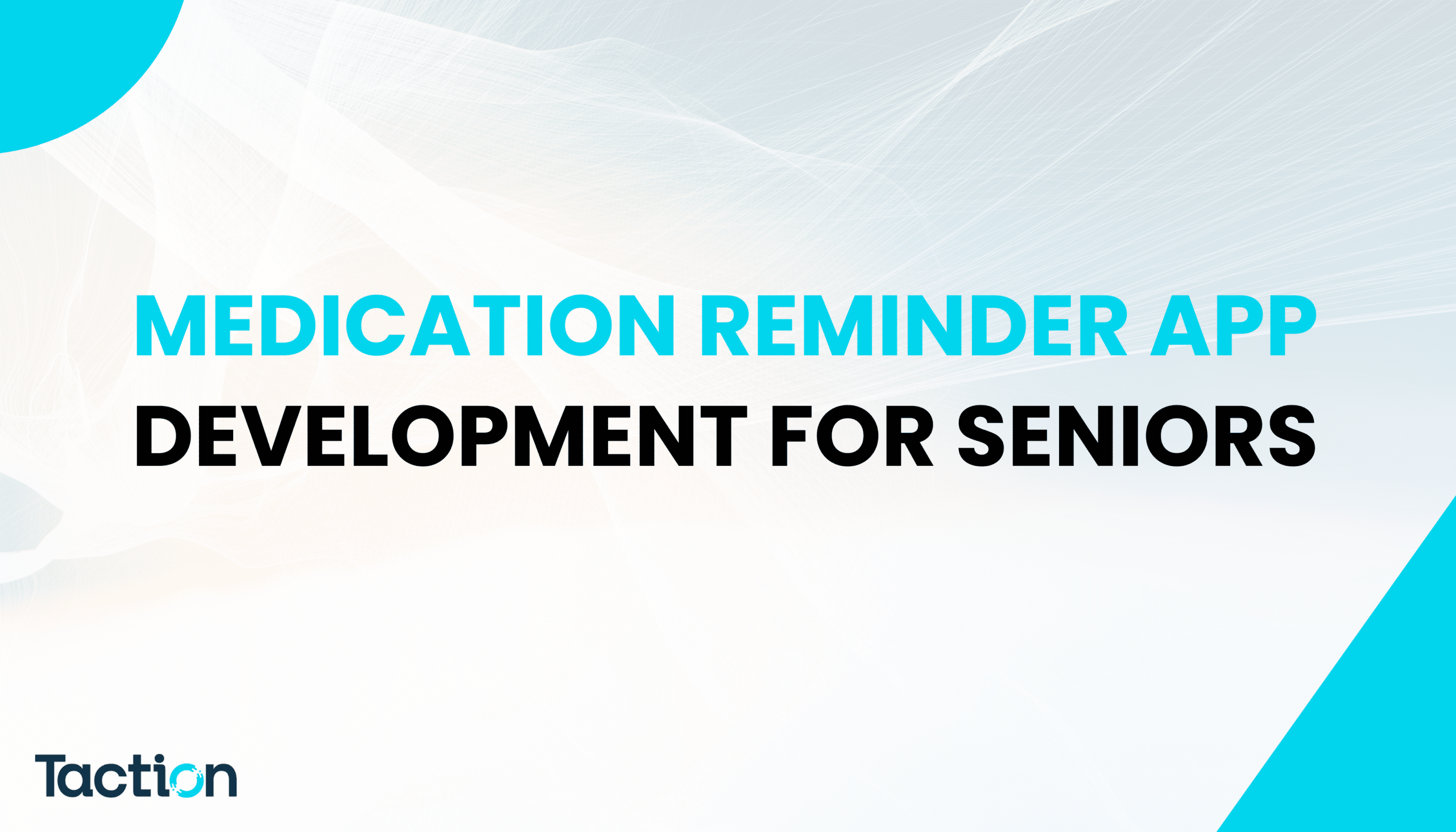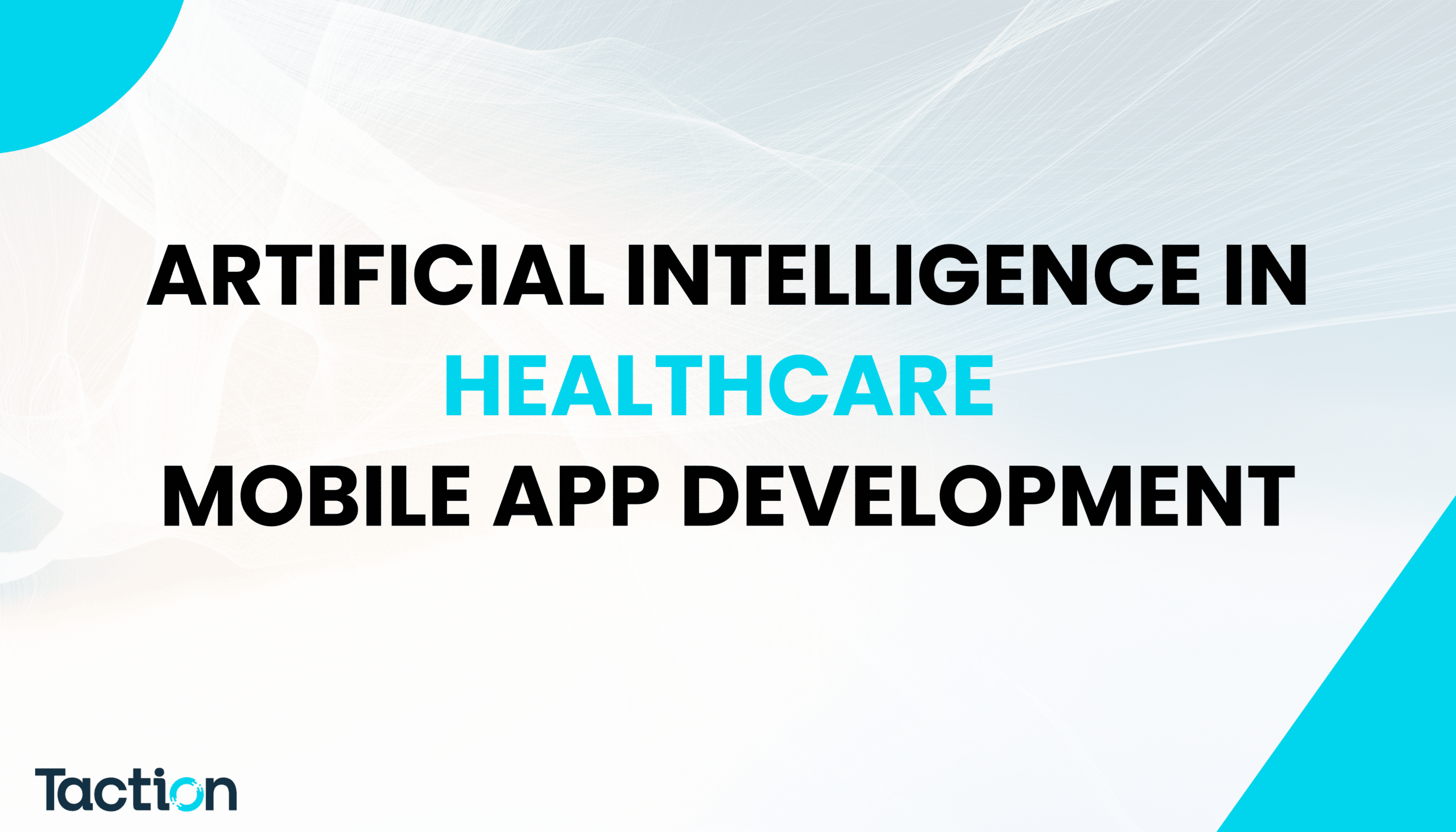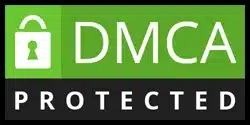Why PHI Anonymization Matters When Using ChatGPT in Healthcare
Protected Health Information (PHI) refers to any patient data that can identify an individual—like names, addresses, lab results, or even appointment dates. Under HIPAA, mishandling this data can lead to serious legal, financial, and reputational consequences for healthcare organizations.
With the increasing adoption of AI tools like ChatGPT in clinical documentation, scheduling support, and care coordination, it’s tempting to rely on these systems for efficiency. But without proper safeguards, entering raw PHI into ChatGPT could mean exposing sensitive health data to platforms that aren’t HIPAA-compliant.
The consequences aren’t just theoretical—real-world breaches have occurred from uploading unmasked patient notes to AI tools. That’s why anonymizing PHI before any AI interaction isn’t optional—it’s critical for regulatory compliance and patient trust.
HIPAA Privacy Rule
Can You Use ChatGPT in a HIPAA-Compliant Way?
As of now, OpenAI’s publicly available ChatGPT does not claim HIPAA compliance. That means you cannot upload or process identifiable health data directly through its standard interface—even if the use case seems harmless.
“Secure PHI handling with ChatGPT” requires pre-processing all data to remove or anonymize any identifiers before submission. This includes names, medical record numbers, and anything that could trace back to a patient.
The responsibility lies entirely with healthcare providers, developers, and vendors—not OpenAI. Whether you’re integrating ChatGPT into an internal tool or using it for operational tasks, you must ensure that all inputs are properly de-identified to meet HIPAA’s strict requirements.
Also Read: Top HIPAA-Compliant App Features Hospitals Need in 2025
What Does It Mean to ‘Anonymize PHI’? A Plain-English Explanation
To anonymize PHI means permanently removing or altering any data that can identify a patient, making re-identification impossible—even with outside information. Unlike pseudonymization, which replaces identifiers with codes that can still be reversed, anonymization is irreversible.
It’s also different from data masking, which simply hides parts of the data for display purposes, or encryption, which protects data in transit or storage but doesn’t alter the data itself. Anonymization actually changes the data structure so no one—even the system—can trace it back to an individual.
This matters because tools like ChatGPT aren’t covered under HIPAA. Unless PHI is fully anonymized, feeding data into AI can trigger non-compliance. Anonymization ensures your use of ChatGPT remains both safe and legally sound.
Also Read: Healthcare Mobile App Development in 6 Steps (2025)
Secure Your AI Workflows
Ensure HIPAA compliance before using ChatGPT—our experts are ready to help.
Understanding HIPAA-Compliant PHI De-Identification Standards
HIPAA outlines two official methods for PHI de-identification: the Safe Harbor method and the Expert Determination method.
The Safe Harbor method requires the removal of 18 specific identifiers—such as names, full-face photos, and geographic details smaller than a state. Once all identifiers are stripped, and there’s no actual knowledge that the data could still identify a person, it’s considered de-identified.
The Expert Determination method, on the other hand, relies on a qualified statistical expert who certifies that the risk of re-identification is “very small” under current and foreseeable conditions. This method is often used in clinical research or AI training environments.
In real-world hospital systems, Safe Harbor is common for automated data workflows, while Expert Determination is preferred for more nuanced datasets used in predictive modeling and machine learning.
Also Read: How Healthcare Business Intelligence Is Improving Patient Care
Key Identifiers to Remove: What Qualifies as PHI?
Under HIPAA’s Safe Harbor rule, there are 18 identifiers that must be removed to consider data fully de-identified. These include obvious ones like names, social security numbers, and phone numbers—but also subtle data points like email addresses, full-face images, IP addresses, and even vehicle license plates.
In real-world systems, these identifiers are often embedded across EHR notes, lab reports, patient chat logs, or appointment scheduling records. For example, a lab note saying “John Smith, 67, from ZIP 10478” contains multiple PHI flags.
Some edge cases are especially risky—like rare diseases, small ZIP codes, or dates of service that could indirectly reveal identity. That’s why careful extraction or masking of these fields is essential before any AI interaction, especially with tools like ChatGPT.
Also Read: How to Develop Medical Software: Guide by Healthcare IT Experts
Get a Free PHI Risk Assessment
Let our team review your AI inputs for de-identification compliance.
Step-by-Step: How to De-Identify Medical Data Before Sending to ChatGPT
Integrating AI into healthcare workflows requires more than just innovation—it demands strict data hygiene. Here’s a step-by-step approach to securely de-identify medical data before using ChatGPT.
Step 1 – Use PHI De-Identification Tools
Start by leveraging trusted PHI de-identification tools—like Amazon Comprehend Medical, Philter, or custom-built ML models—to scan and tag identifiers in structured and unstructured data.
Step 2 – Mask or Redact Identifiers Manually or with Automation
Depending on the use case, either redact fields entirely or replace them with pseudonyms or generic placeholders (e.g., “Patient A” or “CityName”). Automating this ensures consistency across large data sets.
Step 3 – Validate Against HIPAA De-Identification Standards
Ensure your approach complies with either the Safe Harbor checklist or passes an Expert Determination review if your data is complex or edge-case-heavy.
Step 4 – Test the Result in a Controlled AI Sandbox
Before deploying to production, test the anonymized data in a secure sandbox with ChatGPT to confirm that no patient-identifiable information leaks through AI inference.
Step 5 – Maintain Audit Logs for Regulatory Traceability
Track every de-identification action, tool used, and user involved. These audit trails are crucial for compliance and future risk assessments.
Tools and Techniques for AI-Safe Data Handling
Safely handling PHI in AI environments starts with the right tools. A growing number of PHI anonymization software and APIs are designed to help healthcare teams comply with HIPAA while using modern AI tools like ChatGPT.
Solutions like Amazon Comprehend Medical, Microsoft Presidio, and Philter can automatically detect and redact identifiers in structured data (like patient tables) and unstructured data (like clinical notes or transcriptions). These tools can be integrated into existing workflows or wrapped around AI pipelines as a privacy layer.
For advanced use cases, GPT-4 de-identification frameworks combined with custom machine learning models offer even greater precision. These systems can adapt to domain-specific language and minimize the risk of re-identification, even in complex medical datasets.
Choosing the right tools ensures not only HIPAA compliance—but also builds a scalable foundation for safe, AI-assisted healthcare innovation.
Also Read: How to Build Secure Healthcare Apps That Pass HIPAA Audits
Best Practices for ChatGPT Data Privacy in Healthcare Settings
When using ChatGPT in healthcare environments, following data privacy best practices is essential to prevent accidental PHI exposure.
First, always guard against prompt leakage—where previously entered sensitive data may resurface in later interactions. This risk is especially high in shared or persistent chat sessions. Clear session resets and isolated prompts can help mitigate this.
Second, limit usage strictly to anonymized, test, or synthetic data. Never input real patient records, even if the data seems partial or low-risk. Tools like ChatGPT should support operational tasks—not handle protected health information directly.
Finally, enforce role-based access controls (RBAC) and monitor API-level permissions to ensure only authorized users interact with the system. Logging each session and maintaining strict data governance policies reinforces trust and compliance across the organization.
Also Read: FHIR vs HL7: Which Healthcare Interoperability Standard Should You Choose in 2025?
How Taction Software Helps You Safely Integrate AI into HIPAA Workflows
At Taction Software, we bring 20+ years of deep expertise in HIPAA-compliant healthcare IT systems, making us a trusted partner for organizations looking to safely implement AI into clinical and operational workflows.
We design and build custom de-identification pipelines tailored for ChatGPT, GPT-4, and other AI models—ensuring all inputs are stripped of PHI using robust techniques like tokenization, redaction, and data masking.
Whether you’re integrating HIPAA data masking into EHR systems or developing AI-assisted decision tools, we help embed privacy-first architecture into every layer of your solution. Our solutions support both Safe Harbor and Expert Determination standards—backed by audit logs, access controls, and API security.
With Taction, you’re not just adopting AI—you’re doing it the right way: securely, compliantly, and confidently.
Stay competitive with Custom Software Development for Automotive Industry tailored to your unique business needs.
Talk to a HIPAA AI Specialist
Book a 15-min call to explore secure AI integration for your healthcare app.
Common Mistakes to Avoid When Anonymizing PHI for ChatGPT
Even with the best intentions, teams often make critical mistakes when preparing data for AI tools like ChatGPT. The most common error is using incomplete masking—removing names but leaving behind contextual clues like unique medical conditions, dates, or facility names that can still link back to an individual.
Another overlooked risk is sharing rare-case scenarios. For instance, describing a patient with a rare disease in a small ZIP code can unintentionally expose identity, even if all obvious identifiers are removed.
Finally, skipping expert validation—especially in complex datasets—can lead to compliance gaps. Without a formal review under HIPAA’s Expert Determination method, data might still be traceable.
Avoiding these pitfalls ensures your anonymization process is truly effective, not just surface-level.
Future-Proofing AI Use in Healthcare with Strong Anonymization
As AI becomes more embedded in healthcare, the demand for robust medical data anonymization solutions is only accelerating. From clinical decision support to patient engagement tools, AI’s potential depends on the safe, responsible use of data.
Upcoming changes in HIPAA regulations and AI-specific legislation are expected to tighten how healthcare entities manage privacy in machine learning environments. Organizations that adopt strong anonymization practices today will be better positioned to meet tomorrow’s compliance standards.
Beyond legal requirements, establishing clear AI governance policies—including PHI handling protocols, audit mechanisms, and de-identification procedures—will be critical to earning patient trust and scaling AI safely across your healthcare ecosystem.
Final Thoughts: Responsible AI Starts with Responsible Data Handling
As AI tools like ChatGPT become part of daily healthcare operations, proactive anonymization is no longer optional—it’s essential. Protecting patient privacy isn’t just about compliance; it’s about building systems that are ethical, secure, and future-ready.
By removing identifiers, validating de-identification, and following HIPAA standards, healthcare providers can safely embrace AI without risking PHI exposure.
At Taction Software, we help you do exactly that. Reach out today to explore how we can integrate secure, compliant AI solutions tailored to your workflows and regulatory needs.
Download the Anonymization Checklist
A practical PDF you can share with your data team—no signup required.
People Also Ask (FAQs)
No, not without proper de-identification. PHI must be anonymized according to HIPAA standards before using tools like ChatGPT to protect patient privacy.
HIPAA provides two methods: the Safe Harbor method, which removes 18 identifiers, and the Expert Determination method, which statistically ensures data cannot be traced back.
Tools like Amazon Comprehend Medical, Philter, and custom machine learning models help automate PHI detection and anonymization in text, PDFs, and structured datasets.
OpenAI’s public models like ChatGPT are not HIPAA-compliant. To use them safely in healthcare, PHI must be fully anonymized or replaced with synthetic data.
Always remove identifiers, avoid uploading raw patient records, use secured APIs, and log every data interaction. Train staff on compliance protocols.

